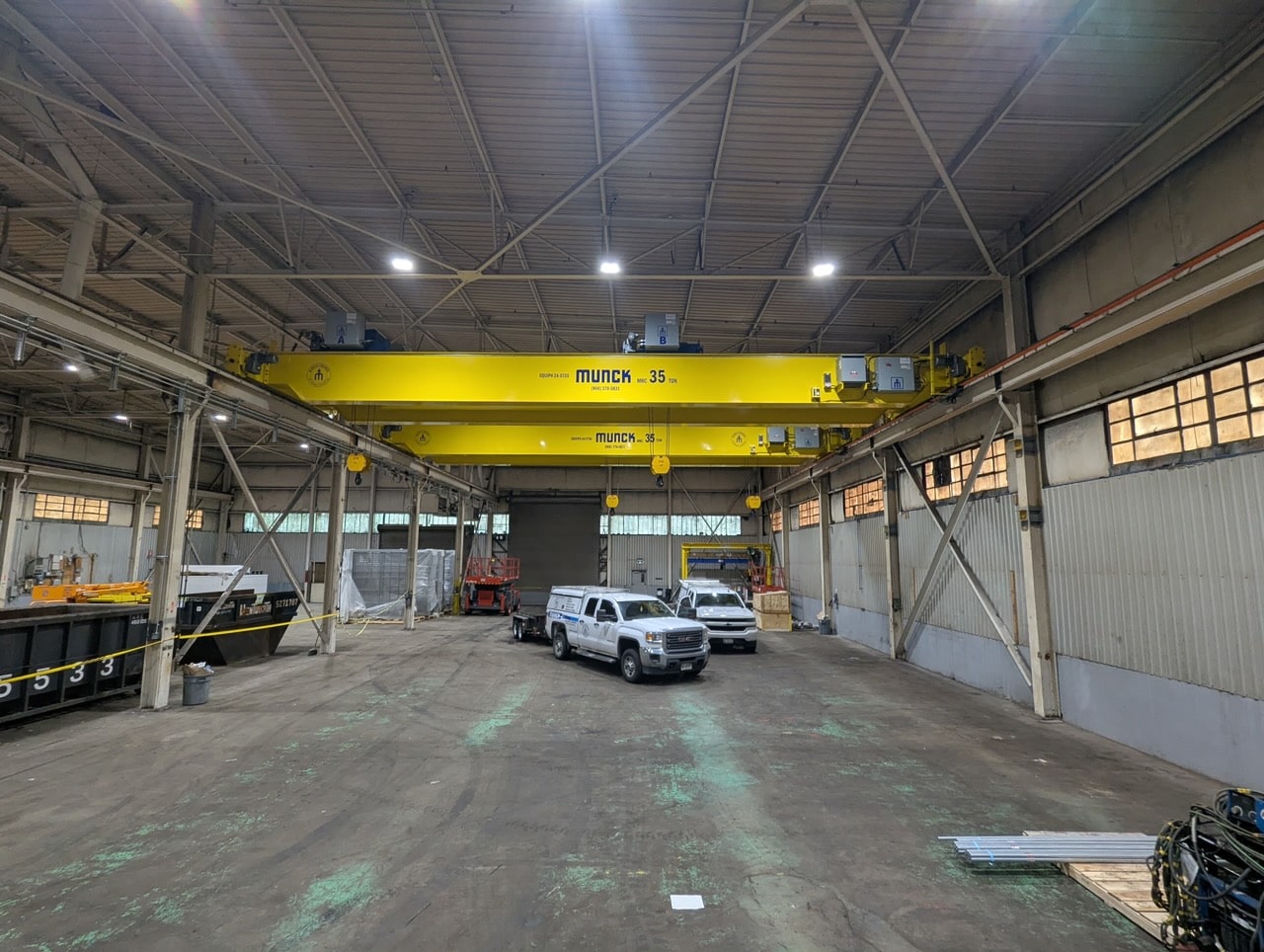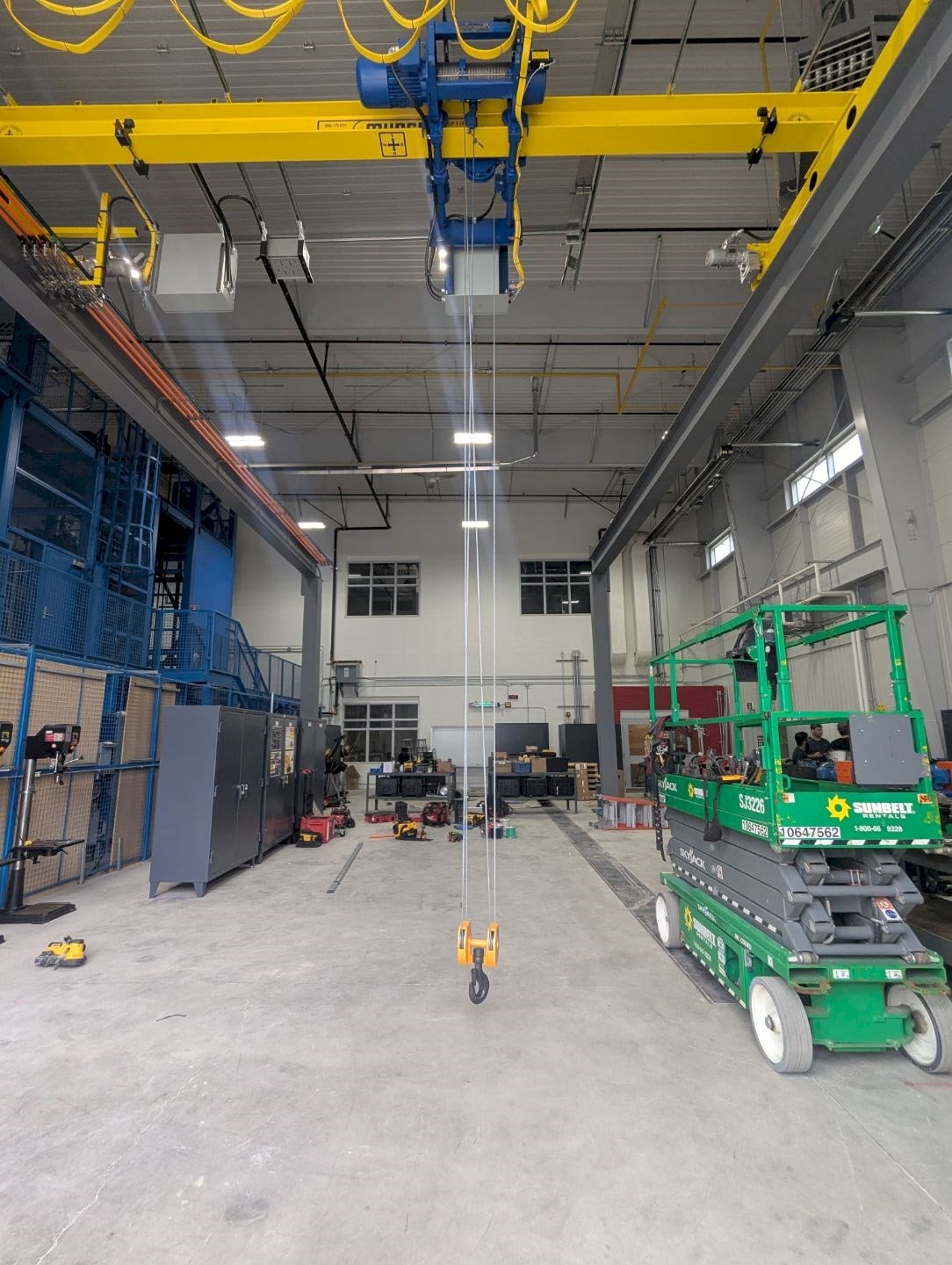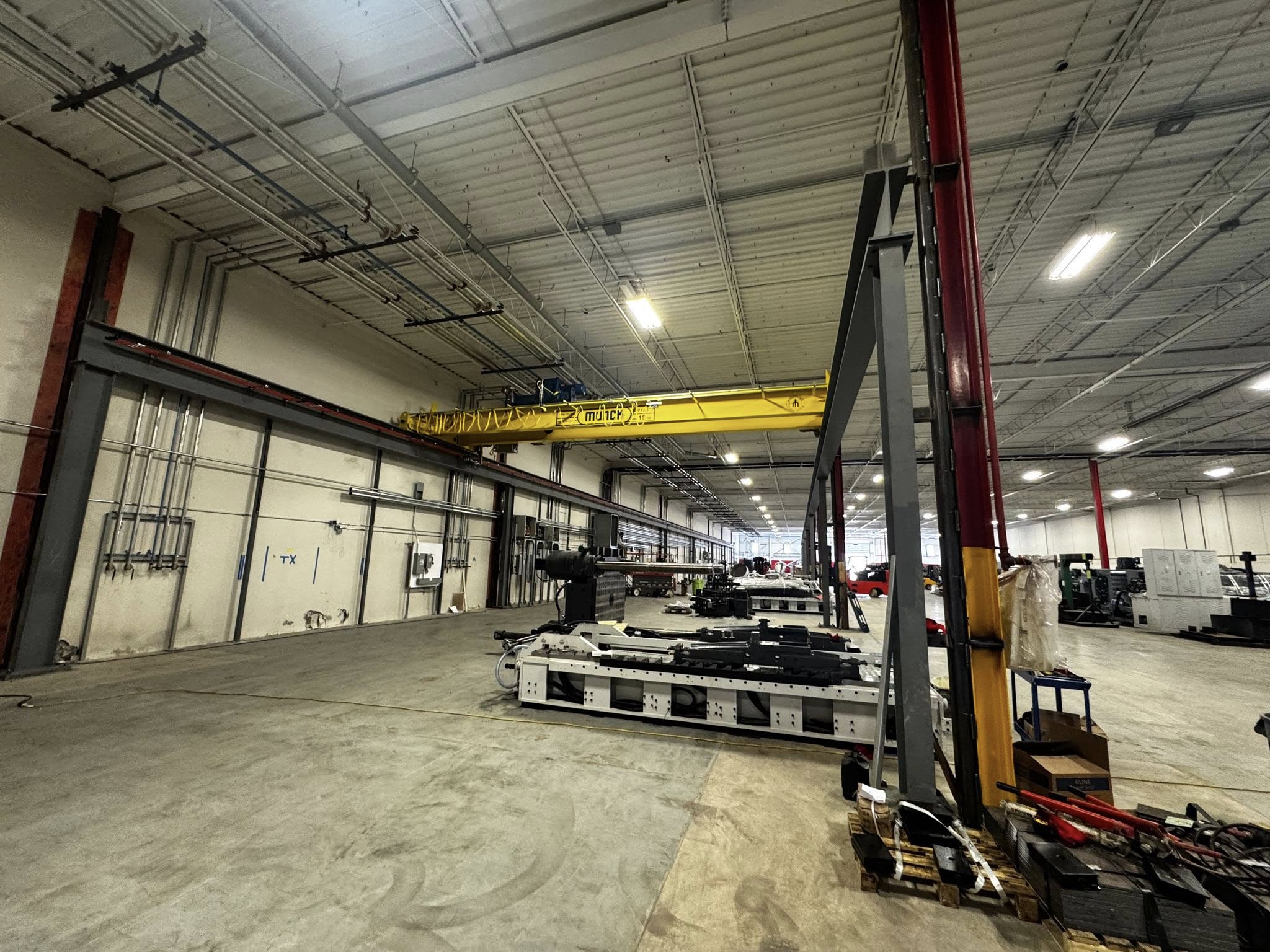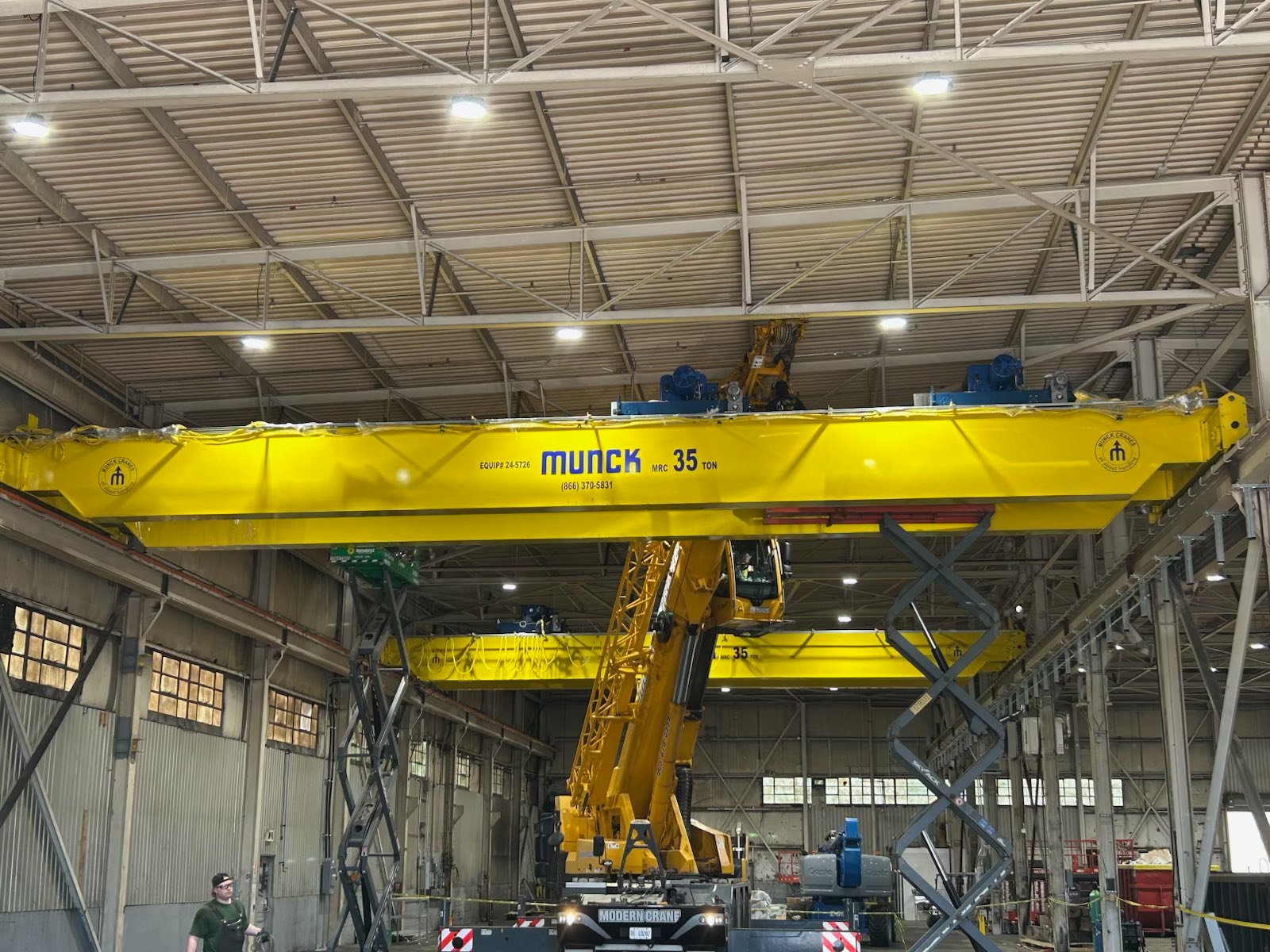 In today’s fast-paced industrial environment, efficiency is the goal of every business and it’s essential to every decision that impacts production time, safety, and operating costs.
In today’s fast-paced industrial environment, efficiency is the goal of every business and it’s essential to every decision that impacts production time, safety, and operating costs.
Among the machinery and equipment that plays a role in optimizing workflows, overhead cranes stand out as a solid and reliable solution in modern material handling.
Our data has shown that when companies integrate cranes into their operations, they tend to see huge gains in productivity, safety, and cost control.
Continue reading to explore how overhead cranes can optimize your operations, drawing on real-world practices, and how Munck Cranes helps companies achieve these improvements.
Cranes Reduce Material Handling Time
The most direct way overhead cranes boost efficiency is by cutting down the time needed to move heavy loads. Cranes provide a clear overhead path, eliminate floor-level obstacles and reduce the time needed to move materials between workstations.
Direct lift paths
Overhead cranes allow vertical lifting and horizontal movement across span and runway which reduces the need for forklifts. This speeds up material transfer and makes better use of available floor space. With fewer obstacles and traffic conflicts, the operator can maintain a predictable and controlled workflow.
In high-traffic or tightly packed environments, this improvement significantly reduces congestion and improves safety for everyone on the floor.
Continuous flow
When material must be moved repeatedly between fixed points (e.g. from the loading dock to a work station), overhead cranes provide a smooth repeatable flow. This allows production lines to keep running without interruption.
With automated controls and planned crane paths, materials arrive exactly where they need to be at the right time which reduces the time workers spend waiting for components or repositioning materials.
Over time this fully optimizes shift productivity and reduced downtime.
Minimized transitions
Minimized transitions mean less handling between equipment and fewer delays, fewer errors in positioning, and reduced damage to products.
Every time a load is transferred from one device to another, there’s a risk of misalignment, damage, or delay but overhead cranes reduce this risk and simplifies this by completing the move in a single uninterrupted lift.
Minimized transitions reduces wear on materials, saves labour, and enhances the precision of delivery.
Overhead Cranes Improve Safety and Workplace Ergonomics
 Handling heavy loads manually or with inadequate equipment leads to higher risk of injury and damage. Overhead cranes reduce these risks by allowing operators to accurately guide loads using remote or pendant controls that keep them out of harm’s way and ensures equipment is used exactly as intended.
Handling heavy loads manually or with inadequate equipment leads to higher risk of injury and damage. Overhead cranes reduce these risks by allowing operators to accurately guide loads using remote or pendant controls that keep them out of harm’s way and ensures equipment is used exactly as intended.
Overhead cranes help in several ways:
Controlled movement
The controlled movement of cranes reduces the chances of sudden shifts and drops. This feature is especially valuable when lifting fragile or oversized loads that could cause accidents. With advanced braking systems and smooth acceleration, cranes provide a steady predictable motion that lowers the risk of workplace injuries, product and equipment damage.
Precision load placement
Precise load placement allows for better alignment and cuts down wear and tear on both product and surrounding infrastructure. With precision placement, operators can position loads exactly where they are needed even in tight or complex spaces.
This reduces the need for manual adjustments, it streamlines setup time, and improves efficiency for downstream processes like assembly lines, welding areas, and storage areas.
Improved ergonomics
Cranes improve ergonomics too. Rather than overexerting or constantly working in awkward positions, operators use remote controls, ergonomically placed cabs, and controls that are integrated into the crane system.
By minimizing the need for repetitive lifting or pushing at floor level, overhead cranes significantly lower the risk of strain and injuries. They also give operators more product visibility and moving-control, all of which creates a safer and less physically demanding work environment.
Cranes Provide Better Utilization of Space
 Every cubic metre of an industrial facility counts. Efficiency and safety are the ultimate goals.
Every cubic metre of an industrial facility counts. Efficiency and safety are the ultimate goals.
Overhead cranes make more efficient use of vertical and horizontal space:
Freeing up floor area
Cranes free up floor area that’s normally needed for large handling paths or staging. By moving loads overhead instead of across the floor they eliminate the need for wide aisles and staging zones.
This opens up valuable space and directly supports core operations with the result being a safer and less congested work environment.
Cranes can extend across multiple bays
Overhead crane runways can be adapted to extend and traverse across multiple bays of a plant. This enables the movement of material above the production zones and doesn’t interfere with floor operations.
This capability also allows companies to connect different areas of their facility without relying on forklifts or trucks to shuttle loads around.
Materials can be easily moved between departments which reduces bottlenecks and improves operational flow.
Cranes support better layout designs
The flexibility of overhead cranes enables better preemptive layout design, and reduces travel distances for other tools, vehicles, and workers.
With cranes operating overhead, plant managers can redesign floor layouts that prioritize efficiency and safety. Shorter travel paths for equipment and personnel mean less wasted motion and fewer opportunities for collisions.
Over time, an improved layout equals measurable gains in productivity and operational safety.
Increased Load Capacity and Flexibility
Operations that involve heavy loads or irregular shapes require robust solutions that overhead cranes easily provide.
Safe lifting of heavy or awkward items
Overhead cranes are designed to safely lift extremely heavy weights. This allows companies to handle large and awkward items that would be impractical move with other handling methods. By removing the need for multiple smaller lifts, cranes streamline the handling of bulky components like steel beams, machinery, or large molds.
Cranes are adaptable to many tasks
With customization (varied hoist types, bridge and gantry configurations) cranes can be adapted to many different tasks (e.g. lifting, transporting, rotating, positioning).
This type of adaptability allows a crane system to support diverse operations within the same facility and reduce the need for multiple pieces of specialized equipment.
Built for upgrades
Cranes can easily be modified and upgraded. Modifications and upgrades like automation, remote controls, and specialized attachments, create flexibility for ever-changing production needs and new product lines.
This makes overhead cranes a long-term investment that can grow with a business and help facilities adapt without a complete system overhaul.
Cost Savings Over Time
Though overhead cranes require an initial investment, over their operational lifetime they generally yield significant savings.
Reduced labour costs
A crane installation means faster lifting, fewer people required for handling, and less downtime from damage or delays. By cutting out repetitive manual tasks, companies save both time and wages while reducing risks and costly injuries.
Lower equipment costs
Overhead cranes means fewer forklifts, less maintenance on floor equipment, and less wear on floors. This extends the lifespan of other equipment and supporting infrastructure – all driving long-term savings.
Cost savings through safer operations
Installing overhead cranes contribute to the reduction of accidents, fines and loss of work. Upgrades that improve energy efficiency or safety (for instance better drives and control systems) also reduce operational expenses. These measures alone save money, but more importantly, they strengthen compliance with regulatory standards.
Cranes Enhance Reliability and Throughput
 All industries will thrive on consistency, and overhead cranes (when well designed and maintained) provide the reliable performance that supports a high throughput.
All industries will thrive on consistency, and overhead cranes (when well designed and maintained) provide the reliable performance that supports a high throughput.
Proactive maintenance
Scheduled inspections and maintenance keep cranes safe and reduce unexpected downtime. This type of reliability ensures the equipment stays in peak condition and protects both workers and operations.
Built-in backup systems
Redundancy or backup systems (dual hoists, multiple control methods) help avoid production interruptions. These safeguards provide reassurance that even if one component fails, operations can continue with minimal disruption.
Advanced control
A modern control system will provide smoother acceleration and deceleration, load monitoring, and safety interlocks. All these controls protect both the equipment and product quality. They allow for consistent performance, which directly translates into reliable throughput and higher-quality results
Munck Cranes Can Help You Leverage The Benefits of Overhead Cranes
At Munck Cranes we focus on delivering solutions tailored for every type of industrial operation. For decades we have provided both standardized and custom material handling systems designed to function reliably in highly demanding environments.
If you’re considering incorporating overhead cranes into your daily operations, reading When Should Your Operations Consider Installing an Overhead Crane will help you determine if installing a crane is the right choice. For businesses aiming to scale, improve quality, and reduce risk, investing in well-engineered crane solutions is most likely the smartest path forward.